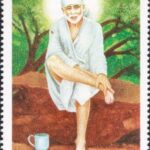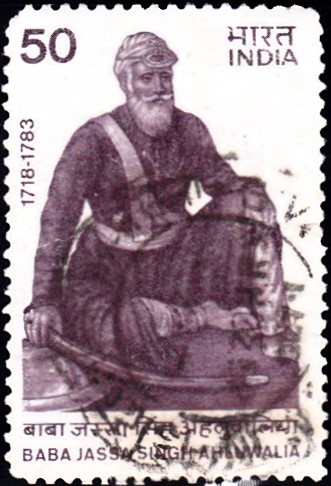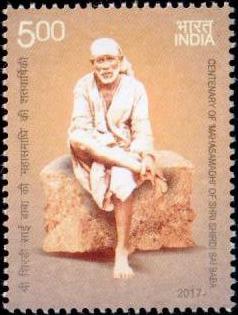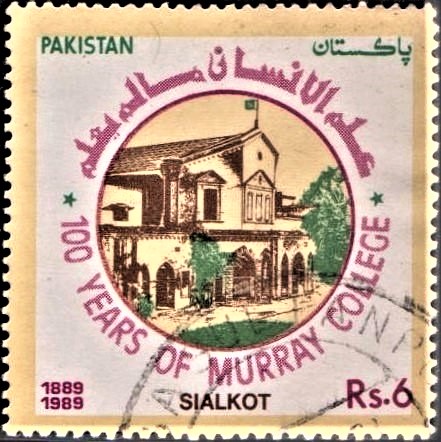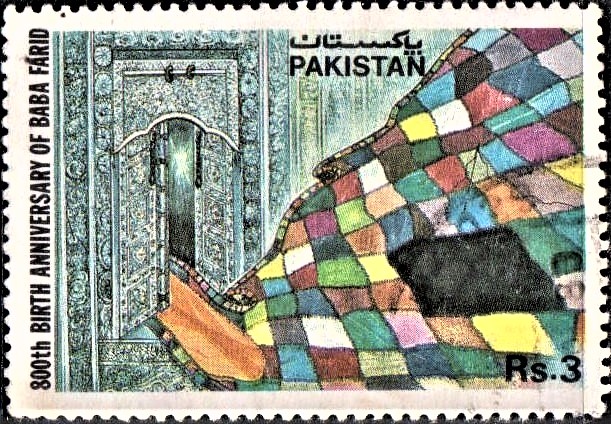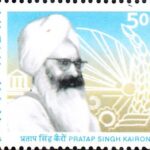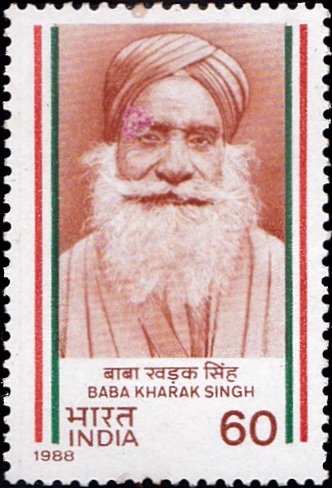
Baba Kharak Singh
A commemorative postage stamp on the Death Anniversary of Jathedar Kharak Singh, President of the Central Sikh League :
 Issued by India
Issued by India
Issued on Oct 6, 1988
Description of Designs : The stamp is designed by India Security Press, Nashik Road. The First day cover is designed by Shri Sankha Samantha and cancellation by Smt. Alka Sharma.
Type : Stamp, Mint Condition
Colour : Multi Colour
Denomination : 60 Paise
Overall size : 4.06 x 2.73 cms.
Printing size : 3.71 x 2.38 cms.
Perforation : 13 x 13
Paper : Indigenous unwatermarked P.G. Matt coated stamp paper
Number Printed : 10,00,000
Number per issue sheet : 40
Printing Process : Photogravure
Printed : India Security Press
Name : Kharak Singh
Born on Jun 6, 1867 at Sialkot, British India
Died on Oct 6, 1963 at Delhi, India
About :
- Born on 6th June, 1867 at Sialkot and graduating from Government College, Lahore in 1889, Baba Kharak Singh became the Grand Old Man of Punjab during the freedom struggle. His spirit of sacrifice, dedication, indomitable will and his capacity to suffer for a cause, made him leave the post of Secretary, Municipal Committee, Sialkot, to join the movement for the freedom of the country.
- At the second Central Sikh League Session, Lahore (1920) attended by Mahatma Gandhi, Baba Kharak Singh urged the Sikhs to throw in their lot with the Congress against Imperialism.
- He took active part in the Gurdwara Liberation Movement. When the Deputy Commissioner of Amritsar took away the keys of the Tosha Khana (Treasury) of Darbar Sahib, Babaji protested against it and was arrested. He refused to accept the jurisdiction of the Court, which imposed a punishment of six months imprisonment and fine of Rs. 1000/-. Released in January, 1922, Baba Kharak Singh accepted the keys of the Shrine returned by the Deputy Commissioner, with the permission of the Sikh congregation. Mahatma Gandhi felicitated him on winning “The first decisive battle of India’s Freedom”.
- The British Government, apprehensive of his growing popularity, tried him under Section 121-124 of the Indian Penal Code for delivering seditious speeches against the Crown and imprisoned him for three years at Dera Ghazi Khan jail where there was a ban on the wearing of Gandhi Cap and black turban. Babaji protested by refusing to wear any clothes except the mandatory under-garment of the Sikhs. His sentence was then increased to five years. After his release from jail, Babaji led a huge demonstration against the Simon Commission in 1928.
- Babaji was again imprisoned in 1935 for his scathing criticism of the Communal Award. By then, inspite of his old age Babaji took up causes like that the I.N.A. in 1945 and toured the Punjab & N.W.F.P. during the election of 1946, contributing to the success of the Congress. In the words of Jawaharlal Nehru “There are few hands which can uphold the honour and preserve the dignity of the National Flag better than those of Babaji.“ He died on 6th October, 1963.
- Material for text; courtesy Eminent Freedom Fighters of Punjab, by Fauja Singh; and Shri Narinder Singh.


